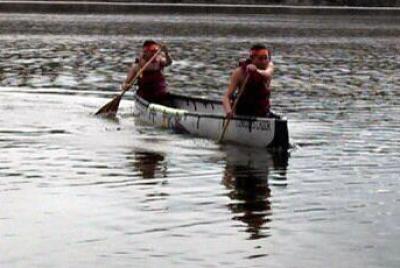Engineering students row concrete canoe to second place in ASCE competition

The student team that designed the canoe was judged on its written report, presentation, display of final product and a variety of races including sprint, endurance and coed.
The NMSU team won first place in the coed sprint, men's and women's endurance, and third place in the men's and women's sprint. The team also took third place for its written report and presentation.
Student-designed and student-built, the canoe dubbed "Conquistador" placed fifth overall in the conference, which also included steel bridge, environmental and geo-technical designs.
"This conference presents an engineering challenge to do something that is not conventional," said Jonathon Gonzalez, former co-captain of the team. "It gives team members something to aspire to and makes us adapt to different challenges."
The competition criteria change each year, he added. This year, teams were not allowed to use computer structural analysis.
While some may be puzzled at the concept - floating concrete - the canoe is able to float because of its density. As with traditional canoes, the density is less than that of the water. Weighing approximately 200 pounds, the concrete canoe can support as much as 800 pounds.
"You can't really believe until you see it," said co-captain Daniel Franco.
The concrete used for the design was developed at NMSU and is composed of cement, recycled glass, fly ash and silica fume. The materials cost about $1,300 and took four months to build.
The canoe's theme this year was Conquistador, which is Spanish for conqueror. The team typically selects themes that represent the Southwest and reflect the Hispanic culture, said Gonzalez. Themes from competitions past have included Billy the Kid, New Mexico's Centennial and La Llorona.
Kenny Stevens, engineering technology associate professor, has served as the team's faculty adviser for 13 years. He described the leadership and hands-on engineering design experience as the greatest benefit to the students.
Gonzalez said transporting the canoe was the most challenging aspect of the competition.
"We need improvement on that," he said. "There were some cracks from it not being properly secured during transportation."
Stevens estimated that a concrete canoe's lifespan ranges from 10 to 20 years, depending on how frequently it is used.
The team has already begun brainstorming ideas for next year's event.
"We're trying to figure out how to take first place next year," said Jonathan Tubbs, civil engineering technologies sophomore.


